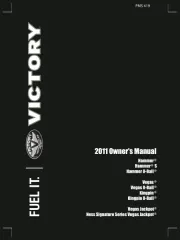Honda Honda Engines GCV135 Handleiding
Bekijk gratis de handleiding van Honda Honda Engines GCV135 (56 pagina’s), behorend tot de categorie Motor. Deze gids werd als nuttig beoordeeld door 209 mensen en kreeg gemiddeld 4.6 sterren uit 105 reviews. Heb je een vraag over Honda Honda Engines GCV135 of wil je andere gebruikers van dit product iets vragen? Stel een vraag
Pagina 1/56

ENGLISH 1
−
INTRODUCTION
SAFETY MESSAGES
CONTENTS
ENGLISHFRANÇAIS ENGLISHENGLISHESPAÑOL DEUTSCHITALIANO
OWNER’S MANUAL
MANUEL DE L’UTILISATEUR
BEDIENUNGSANLEITUNG
MANUAL DEL PROPIETARIO
INSTRUKTIEHANDLEIDING
MANUALE DELL’UTENTE
DAMAGE PREVENTION MESSAGES
NEDERLANDS
GCV135 · GCV160
Thank you for purchasing a Honda engine. We want to help you to
get the best results from your new engine and to operate it safely.
This manual contains information on how to do that; please read it
carefully before operating the engine. If a problem should arise, or
if you have any questions about your engine, consult an
authorized Honda servicing dealer.
This manual should be considered a permanent part of the engine
and should remain with the engine if resold.
All information in this publication is based on the latest product
information available at the time of printing. Honda Motor Co., Ltd.
reserves the right to make changes at any time without notice and
without incurring any obligation. No part of this publication may
be reproduced without written permission.
We suggest you read the warranty policy to fully understand its
coverage and your responsibilities of ownership.
Review the instructions provided with the equipment powered by
this engine for any additional information regarding engine
startup, shutdown, operation, adjustments or any special
maintenance instructions.
Your safety and the safety of others are very important. We have
provided important safety messages in this manual and on the
engine. Please read these messages carefully.
A safety message alerts you to potential hazards that could hurt
you or others. Each safety message is preceded by a safety alert
symbol and one of three words, DANGER, WARNING, or
CAUTION.
These signal words mean:
You WILL be KILLED or SERIOUSLY
HURT if you don’t follow instructions.
You CAN be KILLED or SERIOUSLY
HURT if you don’t follow instructions.
You CAN be HURT if you don’t follow
instructions.
Each message tells you what the hazard is, what can happen, and
what you can do to avoid or reduce injury.
You will also see other important messages that are preceded by
the word NOTICE.
This word means:
Your engine or other property can be damaged if you
don’t follow instructions.
The purpose of these messages is to help prevent damage to your
engine, other property, or the environment.
2009 Honda Motor Co., Ltd. All Rights Reserved
HELPFUL TIPS &
..................SUGGESTIONS . 6
STORING YOUR
............................ENGINE . 6
....Storage Preparation . 6
.......................Cleaning . 6
...............................Fuel . 6
Draining the Fuel Tank
............and Carburetor . 6
....................Engine Oil . 6
....Storage Precautions . 7
Removal from
........................Storage . 7
.............TRANSPORTING . 7
TAKING CARE OF
UNEXPECTED
.........................PROBLEMS . 7
TECHNICAL
...................INFORMATION . 7
.Serial Number Location . 7
Carburetor Modifications
for High Altitude
........................Operation . 7
..................Specifications . 8
CONSUMER
...................INFORMATION . 8
DISTRIBUTOR/DEALER
LOCATOR
................INFORMATION . 8
CUSTOMER SERVICE
................INFORMATION . 8
...................INTRODUCTION .1
............SAFETY MESSAGES .1
.......SAFETY INFORMATION .1
..SAFETY LABEL LOCATION .1
COMPONENT & CONTROL
..........................LOCATIONS .1
BEFORE OPERATION
.................................CHECKS .2
IS YOUR ENGINE READY
..............................TO GO? .2
..........................OPERATION .2
SAFE OPERATING
..................PRECAUTIONS .2
...STARTING THE ENGINE .2
...STOPPING THE ENGINE .3
..SERVICING YOUR ENGINE .4
THE IMPORTANCE OF
.................MAINTENANCE .4
..MAINTENANCE SAFETY .4
...SAFETY PRECAUTIONS .4
MAINTENANCE
........................SCHEDULE .4
.......................REFUELING .4
.......................ENGINE OIL .5
........Recommended Oil .5
..............Oil Level Check .5
.....................Oil Change .5
.....................AIRCLEANER. 5
.............FLYWHEEL BRAKE . 5
......................SPARK PLUG . 6
.............SPARKARRESTER. 6
The illustration may vary according to the type.
3RZ0M600
00X3R-Z0M-6000
GCV135E · GCV160E
WARRANTY
CONFORMITY
COMPONENT & CONTROL LOCATIONSSAFETY INFORMATION
SAFETY LABEL LOCATION
MUFFLER
AIR CLEANER
RETRATSLIOCERPIRGRETRATS
OIL FILLER CAP SPARK PLUG
Manual Choke Type (With CHOKE LEVER type)
Manual Choke Type (Without CHOKE LEVER type)
TOP COVER
(applicable types)
FUEL TANK CAP
CHOKE LEVER
FUEL VALVE LEVER
FUEL TANK
FUEL TANK CAP
FLYWHEEL BRAKE LEVER
(applicable types)
AIR CLEANER
FUEL VALVE LEVER
FUEL TANK
CONTROL LEVER
FLYWHEEL BRAKE LEVER
(applicable types)
Understand the operation of all controls and learn how to stop
the engine quickly in case of emergency. Make sure the operator
receives adequate instruction before operating the equipment.
Your engine’s exhaust contains poisonous carbon monoxide.
Do not run the engine without adequate ventilation, and never
run the engine indoors.
Do not allow children to operate the engine. Keep children and
pets away from the area of operation.
The engine and exhaust become very hot during operation.
Keep the engine at least 1 meter away from buildings and other
equipment during operation. Keep flammable materials away,
and do not place anything on the engine while it is running.
This label warns you of potential hazards that can cause serious
injury. Read it carefully.
If the label comes off or becomes hard to read, contact your Honda
servicing dealer for replacement.
Read Owner’s Manual before operation.
The engine emits toxic poisonous carbon
monoxide gas. Do not run in an enclosed area.
Gasoline is highly flammable and explosive.
Stop the engine and let cool before refueling.
2colGCV135_160_297x210_ORIZ_15set09:297x210 (303x216) 25/09/09 14:18 Pagina 1

ENGLISH
2
BEFORE OPERATION CHECKS
IS YOUR ENGINE READY TO GO?
Check the General Condition of the Engine
Check the Engine
Automatic Choke Type (FIXED THROTTLE type)
FUEL VALVE LEVER
FUEL VALVE LEVER
CONTROL LEVER
FLYWHEEL BRAKE LEVER
(applicable types)
Automatic Choke Type (MANUAL THROTTLE type)
FLYWHEEL BRAKE LEVER
(applicable types)
For your safety, and to maximize the service life of your
equipment, it is very important to take a few moments before you
operate the engine to check its condition. Be sure to take care of
any problem you find, or have your servicing dealer correct it,
before you operate the engine.
Always check the following items before you start the engine:
Look around and underneath the engine for signs of oil or
gasoline leaks.
Remove any excessive dirt or debris, especially around the
muffler and recoil starter.
Look for signs of damage.
Check that all shields and covers are in place, and all nuts, bolts,
and screws are tightened.
Check the fuel level (see page ). Starting with a full tank will
help to eliminate or reduce operating interruptions for refueling.
Check the engine oil level (see page ). Running the engine
with a low oil level can cause engine damage.
Before beginning your pre-operation checks, be sure the engine is
level and stopped.
Check the air filter element (see page ). A dirty air filter
element will restrict air flow to the carburetor, reducing engine
performance.
Review the instructions provided with the equipment powered
by this engine for any precautions and procedures that should
be followed before engine startup.
Check the equipment powered by this engine.
1.
2.
3.
4.
1.
2.
3.
4.
4
5
5
Improperly maintaining this engine, or failure to
correct a problem before operation, can cause a
malfunction in which you can be seriously hurt or
killed.
Always perform a pre-operation inspection before
each operation, and correct any problem.
OPERATION
SAFE OPERATING PRECAUTIONS
STARTING THE ENGINE
Manual Choke Type
CLOSED
OONN
OPEN
FUEL VALVE LEVER
CCLLOOSSEEDD
CHOKE LEVER
CCLLOOSSEEDD
((CCHHOOKKEE))
CONTROL LEVER
FLYWHEEL BRAKE LEVER
STARTER GRIP
Direction to pull
RREELLEEAASSEEDD
Before operating the engine for the first time, please review the
SAFETY INFORMATION
section on page and the
BEFORE
OPERATION CHECKS
on page .
Carbon monoxide gas is toxic. Breathing it can cause
unconsciousness and even kill you.
Avoid any areas or actions that expose you to carbon
monoxide.
[Without CHOKE LEVER type]
Move the control lever to the CLOSED (CHOKE) position.
Pull the starter grip lightly until you feel resistance, then pull
briskly in the direction of the arrow as shown below. Return the
starter grip gently.
Move the flywheel brake lever to the RELEASED position.
The engine switch, which is linked with the flywheel brake lever,
is turned on when the flywheel brake lever is moved to the
RELEASED position.
With FLYWHEEL BRAKE LEVER type:
Review the instructions provided with the equipment powered by
this engine for any safety precautions that should be observed
with engine startup, shutdown or operation.
Do not allow the starter grip to snap back against the engine.
Return it gently to prevent damage to the starter.
Do not operate the engine on slopes greater than 15°.
Do not use the choke if the engine is warm or the air temperature
is high.
Turn the fuel valve lever to the ON position.
Move the choke lever to the CLOSED position.
[With CHOKE LEVER (automatic return choke) type]
1.
2.
1
2
3.
4.
2colGCV135_160_297x210_ORIZ_15set09:297x210 (303x216) 25/09/09 14:18 Pagina 2

ENGLISH 3
STOPPING THE ENGINE
SLOW
CONTROL LEVER CONTROL LEVER
STOP
OOFFFF
EENNGGAAGGEEDD
FUEL VALVE LEVER
FLYWHEEL BRAKE LEVER
[MANUAL THROTTLE type]
Move the control lever to the SLOW position.
Without FLYWHEEL BRAKE LEVER type:
Move the control lever to the STOP position.
The engine switch, which is linked with the control lever, is
turned off when the control lever is moved to the STOP position.
Turn the fuel valve lever to the OFF position.
Return the flywheel brake lever to the ENGAGED position. The
engine switch, which is linked with the flywheel brake lever, is
turned off when the flywheel brake lever is moved to the
ENGAGED position.
With FLYWHEEL BRAKE LEVER type:
1.
.3.2
Automatic Choke Type
SLOW FAST
CONTROL LEVER
CONTROL LEVER
SLOW FAST
[With CHOKE LEVER (automatic return choke) type]
Operate the recoil starter as soon as you move the flywheel
brake lever to the RELEASED position. The choke lever
automatically begins moving to the OPEN position when the
flywheel brake lever is moved to the RELEASED position.
Turn the fuel valve lever to the ON position (see page ).
Move the flywheel brake lever to the RELEASED position (see
page ).
[MANUAL THROTTLE type]
Move the control lever to the FAST position.
Pull the starter grip lightly until you feel resistance, then pull
briskly in the direction of the arrow as shown on page .
[MANUAL THROTTLE type]
Position the control lever for the desired engine speed.
If the engine does not start within several consecutive pulls of
the recoil starter, move the flywheel brake lever to the
ENGAGED position and move the choke lever to the CLOSED
position.
Move the flywheel brake lever to the RELEASED position and
immediately begin operating the recoil starter.
[Without CHOKE LEVER type]
When the engine warms up, move the control lever to FAST or
SLOW position.
1.
5.
5.
2.
3.
4.
6.
2
2
2
2colGCV135_160_297x210_ORIZ_15set09:297x210 (303x216) 25/09/09 14:18 Pagina 3
Product specificaties
| Merk: | Honda |
| Categorie: | Motor |
| Model: | Honda Engines GCV135 |
Heb je hulp nodig?
Als je hulp nodig hebt met Honda Honda Engines GCV135 stel dan hieronder een vraag en andere gebruikers zullen je antwoorden
Handleiding Motor Honda
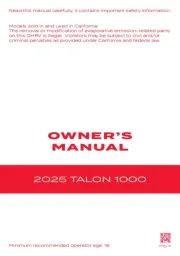
14 Juli 2025
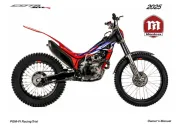
14 Juli 2025
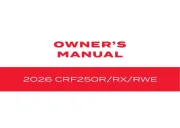
10 Juni 2025
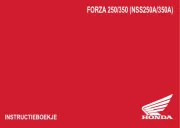
18 Maart 2025

18 Maart 2025
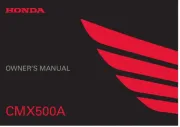
18 Maart 2025

18 Maart 2025
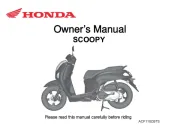
18 Maart 2025
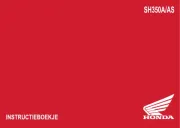
18 Maart 2025
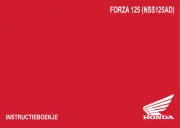
18 Maart 2025
Handleiding Motor
- Ridley
- Cagiva
- Danfoss
- Elac
- Texas
- Hecht
- Triumph
- Ducati
- Juki
- Joy-it
- Mitsubishi
- Kindercraft
- Husqvarna
- Reebok
- BMW
Nieuwste handleidingen voor Motor
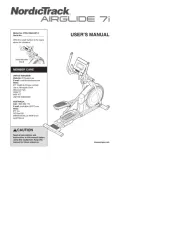
4 Augustus 2025
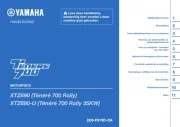
4 Augustus 2025
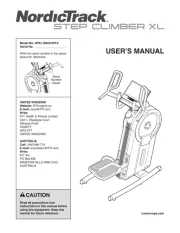
4 Augustus 2025
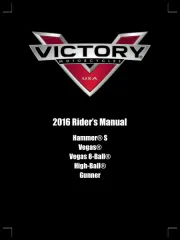
29 Juli 2025
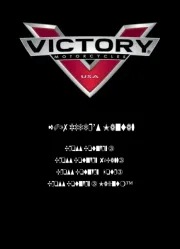
29 Juli 2025
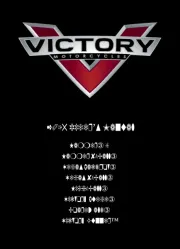
29 Juli 2025
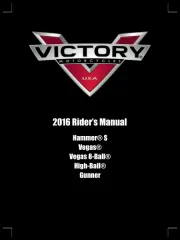
29 Juli 2025
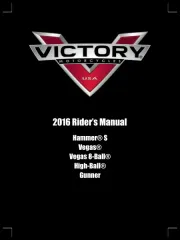
29 Juli 2025
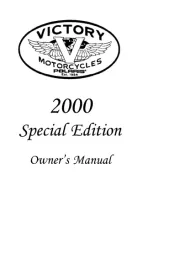
29 Juli 2025
